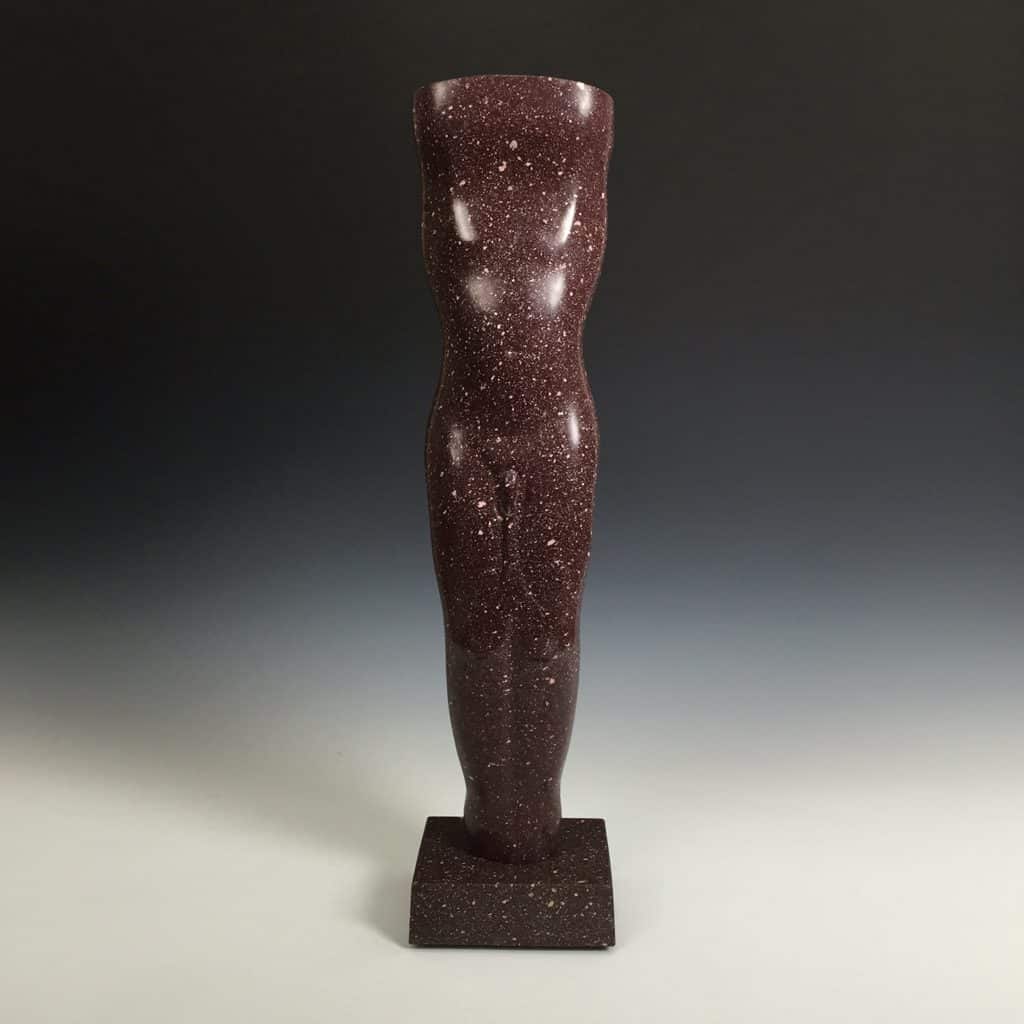More about Figure: Vessel, 2014
The ‘figure’ and its association with the ‘vessel’ has been an aspect of Cox’s work since working in India and Egypt over the past 30 years. In the ancient Egyptian context the body, ‘Ba’, as a receptacle for the spirit or soul,’ Ka’, illustrates this concept. In Indian theology, cosmology and consequently art, objects and figures are imbued with the spirit of god through ‘puja’ (prayer) for the purposes of devotion.
Imperial, i.e., Egyptian porphyry through its purplish hue became representative of the somewhat ‘holy’ status of emperors of the Imperial era, upon its discovery and dedication as such, sometime after its discovery in A.D. 18 attributed to the Roman Legionnaire Caius Caminius Leugas.
Cox’s interest in Imperial porphyry originated from his researches in the late 70’s when travelling in Italy with an itinerary to visit the stone and marble quarries listed by Vasari in his ‘The Technique’, a preface to his ‘Artist’s Lives’. From his studio at the American Academy Cox (1981-2) visited the many museums, temples and churches where this ‘liverish’ stone was displayed. Having found a small example of Green Spartan Porphyry in a flowerbed he made his first porphyry sculpture. Other porphyry was available from the ‘pietra dura’ industry and some small examples were procured. Considered the ‘hardest stone in the World’ it preoccupied one of Cox’s heroes Alberti who spent much time trying to uncover how the ancients were able to master its unbelievable hardness, which has also captivated Cox.
Out of the blue, in 1988, Cox received an invitation from the Foreign and Commonwealth Office to produce a sculpture as a gift to the Egyptian People for their new Opera House. This gave Cox the opportunity to fulfil his ambition to visit and procure stone from the Imperial Porphyry Quarries. With the collaboration of the Egyptian Ministry of Culture and the Egyptian Geological Surveying Mining and Mapping Association he organised an expedition to Gebel Dukhan, the Mountains of Smoke.
From the resulting work carved at his studio at Hurghada, a monumental two part work, ‘Song’, in Imperial porphyry and white diorite, also from the Roman source, was selected by the Minister and artist Farouk Hosni, and installed in Cairo. From other works repatriated to UK - ‘Chrysalis’ a 3 ton 3 meter sculpture was acquired by the Tate Gallery.
With collaboration of the Geological Survey Cox visited and procured stones of rare provenance to produce many other sculptures including ‘Interior Space’ which now stands at Houghton Hall with ‘Flask II’, a war memorial titled ‘Tribute Sculpture’, in Hammamat Breccia commissioned by the Government Art Collection for the British High Commission in Canberra Australia, an altar in Porphyry and Breccia for St Paul’s Church Harringay, ‘Eucharist’ in Egyptian alabaster and Egyptian porphyry for Newcastle Cathedral, ‘Interior Space: Shrine’, a ‘porphyra’ commissioned by the National Gallery for the 2000 ‘Encounters’ exhibition, a ‘Holy Water Stoup’ in Hammamat Breccia for Canterbury Cathedral and ‘Adam and Eve Vessels’ in Hammamat Breccia and Egyptian Porphyry for St Luke’s Church Chelsea.
The little ‘Figure: Vessel’ is a part of this family of objects.


